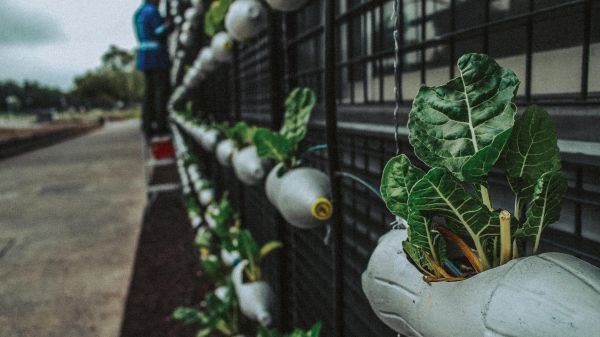Seven Ways Environmental Educators Can Teach Students to Bring Environmental Activism Home

Our planet has had a strange mix of ups and downs this year, and it can't rest even if we're staying home. Students might be getting restless learning from home, but it's still essential that you make a statement on how vital it is to be an environmental activist. We only have one planet, and you can be the person who shows your students how delicately balanced that the world is—and how we can work together to fix it.
Here are seven ways you can reach your students and open their minds to environmental activism, even if they’re at home.
Have Students Start A Garbage Jar
Although not all of the trash made in production ends up in the hands of the customer, it can be significant for students to see how much waste they generate. Ask them to spend a week accumulating as little trash as possible.
Use reusable bags, compost peels, and stems, recycle things that can be recycled. By the end of the week, see how little trash they can accumulate. Some people have gone to the extreme, and after four years, all of their waste is still capable of fitting in a garbage mason jar. Your students don't have to be that extreme, but this project will help them realize how much they throw away.

Participate in the Urban Bird Sounds Project
Since we're all in our homes more than ever now, students need to learn about the natural world outside their window. Despite most of the American population living in an urban environment, there's still life to study.
This project, started by students for students, helps you recognize the different bird sounds you hear in your city. It also has pictures handy in case the bird is in view. Your students should research the birds they hear, and write about the environmental impact we've had on them.
Save An Endangered Species
One out of every million species vanishes from our planet every year. Have your students pick an endangered species that isn't well-known and instruct them to build a plan to save this species. Although they can reference other methods that are currently underway, the most significant part of the project has to be their ideas.
Let them advocate for these endangered species, and make their case clear on why we still need them on our planet.

Study the Local Effects of El Niño
This warm band of ocean water is capable of changing the land's environment to which it heads. It's also capable of causing the spread of disease and affects agriculture. Teach your students about El Nino by researching why the El Nino effect has been getting stronger every year, and how it has affected major global events over the past hundred years.
These changes primarily affect southern states, so if you're in that area, this lesson can be hands-on by having students track how the cycle affects the weather and environment where they are.
Ask Them To Redesign Their Room Sustainably
Although it would be wonderful if everything you wanted could get found in a second-hand store, it is still possible to minimize your footprint. Teach them to pick sustainable furniture brands by showing them the reduced carbon footprint these can cause.
Let your students choose a room in their home to redesign, whether it's a bedroom or a kitchen, and show them the beauty in sustainability. It doesn't have to be reclaimed wood or a cabinet previously owned by four different people—they can have new things and still be environmentally mindful.

Have An Earth Day Hour Every Day For A Week
This project needs to be scheduled for a time when it's not too hot or too cold because you don't want your students to come to any harm. Instruct them to take an hour every day (when they would usually be awake and active), turn off all of their electronic devices, and, if possible, the heating and cooling of their home.
They can use this time to read, journal, or find some other activity to keep their minds busy. By saving seven hours of power in a week, they cut down on their CO2 output and lessen their carbon footprint.
Show Them Clutter Is a Global Problem
People own far more things than they need; millions of storage units exist in America. An excellent exercise for students to do at home is to use a site like Freecycle, where people can declutter and give away items that can't get thrown out. The site has guidelines for health and safety in the current atmosphere, and it's an excellent way for students to have a hands-on view of never throwing anything away.
You can also take the time to walk students through recycling. Although most states have some laws about recycling, many don't. Studies show that only 34% of Americans recycle, so take this time to show them its importance and how to recycle correctly, so their work doesn't go to waste.

----------------
Hands-on projects are the best way to capture and hold your student's attention. Work with them on a level that they would find exciting from home, and you can open their minds to the possibilities of change. As the younger generation, our planet's future is in their hands, so it's our responsibility to show them the good that's possible.
